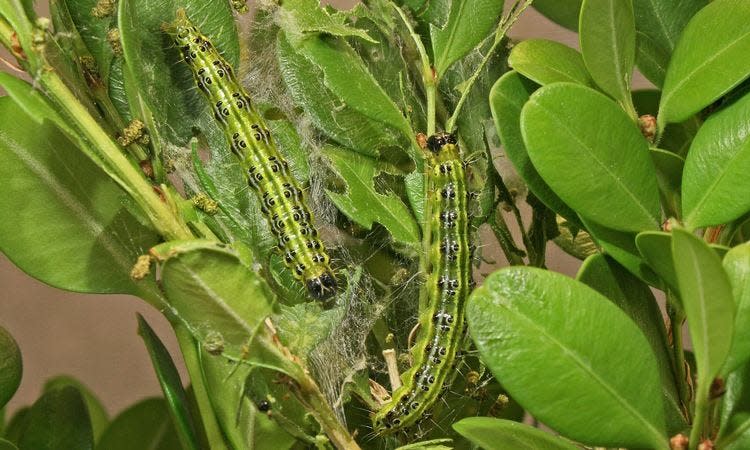Here's what an expanded box tree moth quarantine means to St. Clair County
The Michigan Department of Agriculture and Rural Development expanded the state's interior box tree moth quarantine Monday.
Although not a threat to Michigan’s natural resources, interior box tree moths can lead to significant defoliation and death of ornamental boxwood. The quarantined area now includes Clinton, Eaton, Ingham, Jackson, Lenawee, Livingston, Macomb, Monroe, Oakland, St. Clair, Washtenaw and Wayne counties.

Under the quarantine, the whole plant, plant parts, and nursery stock of the genus Buxus, including all living and dead material, cannot be moved outside of quarantined areas. Holiday greenery, such as wreaths, boughs and grave blankets are exempt from the restrictions if moved from Oct. 15 through Jan. 1.
Mike Philip, MDARD's bureau director of environment and sustainability said in a press release that by expanding the quarantine, the department hopes to keep box tree moths from moving to new areas, while also minimizing the impact on Michigan's horticulture industry.
"MDARD is working closely with Michigan's horticulture industry to ensure the safe trade of plant materials, and to minimize the impact on nurseries, greenhouses and retailers both inside and outside the quarantined area," he said.
Box tree moth caterpillars are green and yellow with white, yellow and black stripes and spots. Adults have white wings with dark brown borders and a distinctive white dot or mark in the middle of each forewing.
Box tree moth may not be easily recognized at the beginning of an infestation because the caterpillars hide in twigs and leaves. Signs of infestation include chewed, cut or missing leaves, yellowing or brown leaves, white webbing and green-black excrement on or around the effected plant.
Larvae also skeletonize the leaves and feed on the undersides, causing defoliation and dryness, eventually leading to the plant's death.
"In the spring, residents within the quarantine area should examine their boxwood for symptoms of box tree moth," Philip said. "By reporting any signs of the pest, Michiganders can help us determine the scope of the infestation and reduce the spread."
Suspected cases of box tree moth should be reported to www.Michigan.gov/ReportBTM.
After MDARD officials have confirmed a suspected case, residents are advised to remove infested branches, or for heavy infestations, cut the boxwood from its base. It should grow back from the roots.
All boxwood debris should be double bagged in plastic and discarded with household trash. Some municipalities or trash vendors may have restrictions surrounding plant material disposal. Residents should check with their local waste management entity for guidance.
For more information, and a list of insecticides known to be effective against destructive caterpillars, view the Michigan State University Insecticide Options for Box Tree Moth Management.
Additional information about box tree moth can be found at www.Michigan.gov/invasives.
Contact McKenna Golat at mgolat@gannett.com.
Subscribe: Follow more stories in the Blue Water Area. Subscribe to the Port Huron Times Herald.
This article originally appeared on Port Huron Times Herald: MDARD expands quarantine of box tree moths

